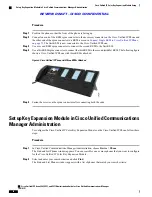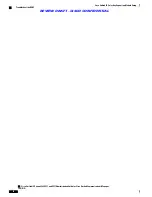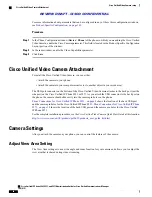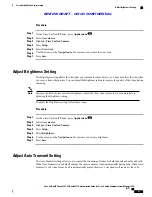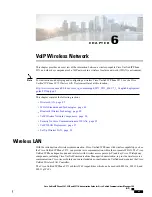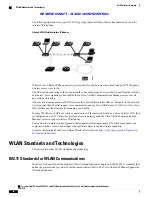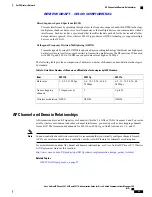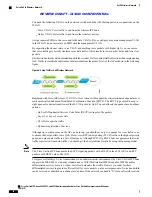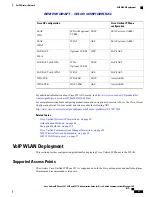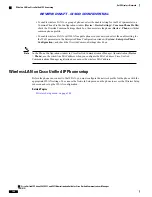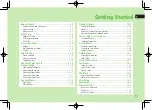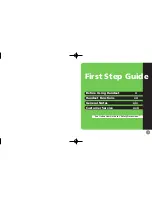
United Kingdom (GB)
Oman (OM)
Greece (GR)
United States (US)
Panama (PA)
Hong Kong (HK)
Venezuela (VE)
Peru (PE)
Hungary (HU)
Vietnam (VN)
Philippines (PH)
Iceland (IS)
Radio Frequency Ranges
WLAN communications use the following radio frequency (RF) ranges:
•
2.4 GHz: Many devices that use 2.4 GHz can potentially interfere with the 802.11b/g connection.
Interference can produce a Denial of Service (DoS) scenario, possibly preventing successful 802.11
transmissions.
•
5 GHz: This range divides into several sections called Unlicensed National Information Infrastructure
(UNII) bands, each of which has four channels. The channels are spaced at 20 MHz to provide
nonoverlapping channels and more channels than 2.4 GHz provides.
802.11 Data Rates, Transmit Power, Ranges, and Decibel Tolerances
The following table lists the transmit (Tx) power capacities, data rates, ranges in feet and meters, and decibels
that the receiver tolerates for the 801.11 standards.
Table 11: Tx power, data rates, ranges, and decibels by standard
Receiver sensitivity
Range
Data rate (See
Note 2)
Maximum Tx power
(See Note 1)
Standard
802.11a
-91 dBm
604 ft (184 m)
6 Mbps
16 dBm
-90 dBm
604 ft (184 m)
9 Mbps
-88 dBm
551 ft (168 m)
12 Mbps
-86 dBm
545 ft (166 m)
18 Mbps
-82 dBm
512 ft (156 m)
24 Mbps
-80 dBm
420 ft (128 m)
36 Mbps
-77 dBm
322 ft (98 m)
48 Mbps
-75 dBm
289 ft (88 m)
54 Mbps
802.11g
Cisco Unified IP Phone 8961, 9951, and 9971 Administration Guide for Cisco Unified Communications Manager 10.0
(SIP)
87
VoIP Wireless Network
Radio Frequency Ranges
REVIEW DRAFT - CISCO CONFIDENTIAL


